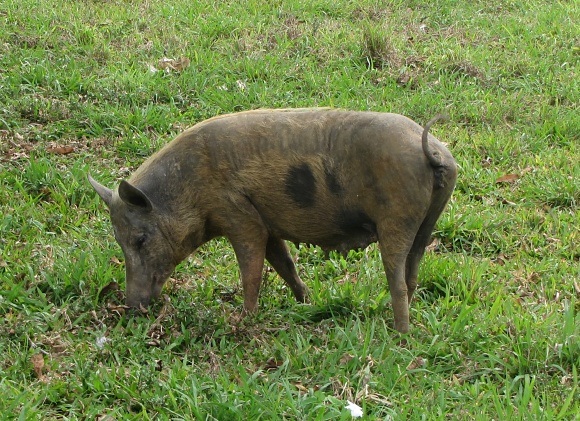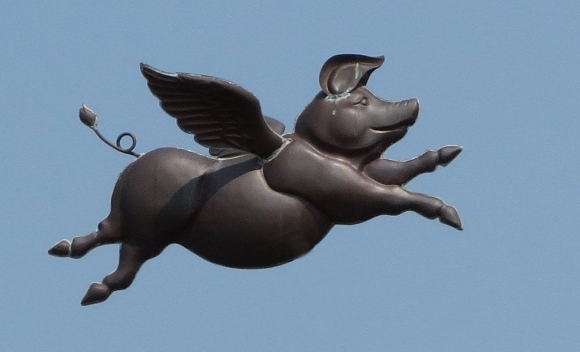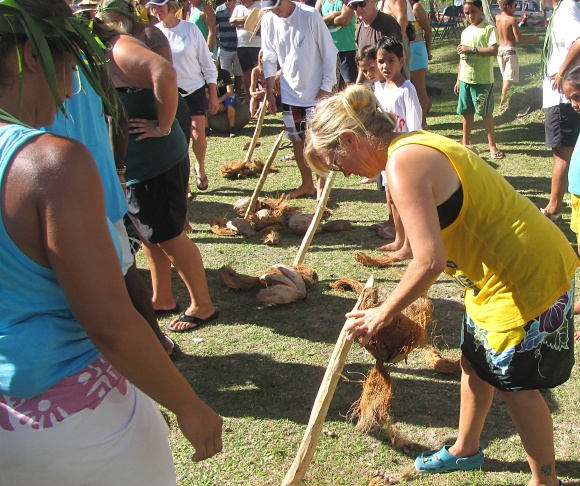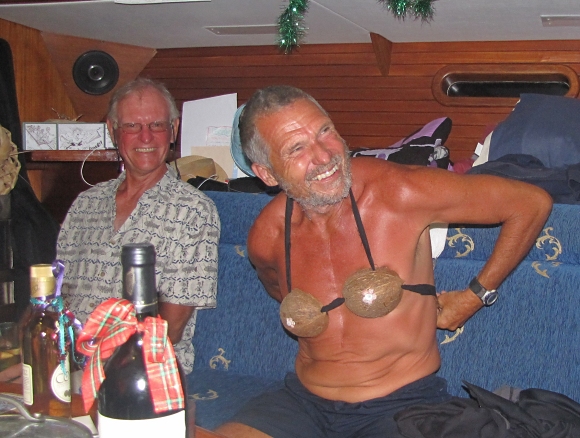Piggin' Out
/“I like pigs. Dogs look up to us. Cats look down on us. Pigs treat us as equals”
Sir Winston Churchill
Pigs, hogs, porkers, swine … whatever you call them, they're curious creatures. I've read that they're pretty intelligent, but I can't vouch for that since I've never been friendly enough with a pig for verification purposes. There are some pig characters I really enjoy …. the inimitable Muppets' Miss Piggy and Pigs in Space, the crafty Three Little Pigs (at least the brick house pig). I'm not a pork eater, although we did try the obligatory cuy (roast guinea pig), in Peru. First we saw them running around the yard and the next thing you knew they were on our plate served with rice and veggies.
There are truffle-finding pigs in France and Angry Bird pigs. Human eating pigs in Hannibal were not the benign “piggy, piggy, piggy” type that I've seen around . Remember Dorothy falling into the pig sty in Wizard of Oz? It wasn't pretty. Folks now keep pot-bellied pigs as pets (not on a boat though). There are piggy banks, of course, and pigs in a blanket. In the ancient Norse culture, the pig (wild boar) was revered. We anchored in the Pigsties anchorage in southeast Tasmania once … no pigs though.
In the South Pacific, pigs are omnipresent and a long-standing, important part of their culture. You can determine a man's worth by the number of pigs he has and is willing to sacrifice for a celebration. The pigs run free and happy like dogs or chickens, until it's feast time. Celebrations, mind you, might be for a birth, wedding, funeral, circumcision, school graduation or a ritual hair-cutting somewhere in the village. Captain Cook let pigs loose on several of the South Pacific islands with the thought that they'd multiply and provide food for marooned sailors. To this day, wild pigs on many of the islands are still referred to as Captain Cookers.
With all the pigs and piglets running around, I asked my Tongan friend, Fa'aki, just how she knew which pigs were hers and how she rounded them up. “Oh, I just whistle”, she said and she did and sure enough all her pigs came immediately to her. No “suey, suey” required. Every pig knew his owner's particular whistle, or call, or bell ring and came a'running for meal time when they heard it. Unfortunately, sometime they were “meal time”.
In Vanuatu, the slaughtering and preparation of a pig for a ritual feast was not a pleasant experience for us or the pigs. We could hear the pigs squealing from our anchored boat. The words inhumane and barbaric come to mind, but as guests we can choose to either participate or not in traditional feasts, but we don't comment on others customs or cultural traditions. Certainly, in first world countries, we tend to forget the slaughter of the animals that provide our meat. Seeing a thick pork chop all neatly packaged in the Meat Department cooler is a far cry from seeing a pig on the hoof being slaughtered.
There are some pig phrases that come to mind like a “pig in lipstick”, a term used particularly when referring to political “spin”. Then there's "You can't make a silk purse from a sow's ear" which seems to have been in use by the middle of the 16th century or even earlier. My favorite though is “when pigs fly” which is an idiom apparently derived from an old Scottish proverb, but more recently used by Lewis Carroll in Alice's Adventures in Wonderland.
"Thinking again?" the Duchess asked, with another dig of her sharp little chin.
"I've a right to think," said Alice sharply, for she was beginning to feel a little worried.
"Just about as much right," said the Duchess, "as pigs have to fly...."
Some piggy trivia:
Pigs are called using the word “Suey”. When I checked out why, the best answer was ”that's the noise they make”. Hmmm....doesn't sound like that to me. I'm thinking it's because they're part of the suidae family, and that sounds like suey. Anyhow, give a listen to some pig calls.
Pigs are good swimmers.
Pigs are intelligent … #4 on the animal intelligence list just below chimps, dolphins and elephants. They learn tricks faster than dogs!
Okay … so why the pig post? We drove by Carl's Oxford Diner Pig bus the other day and well, one thought just lead to another.
And as Porky Pig would say:
















